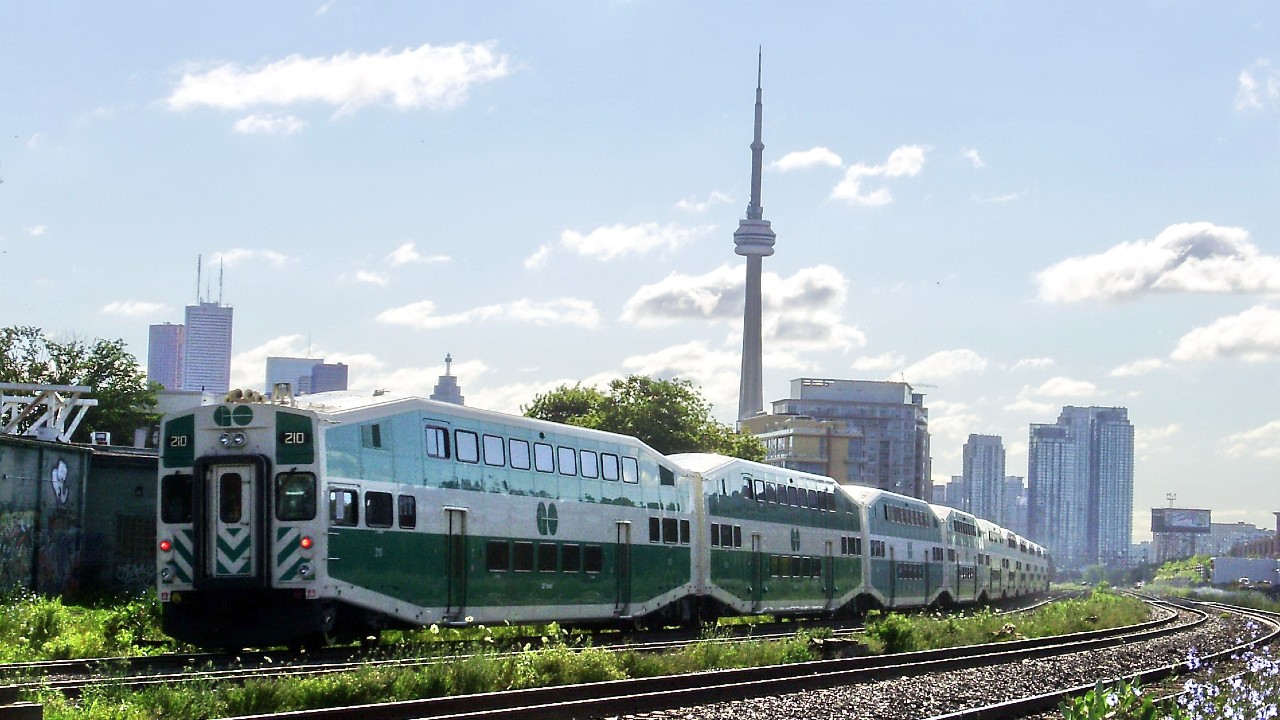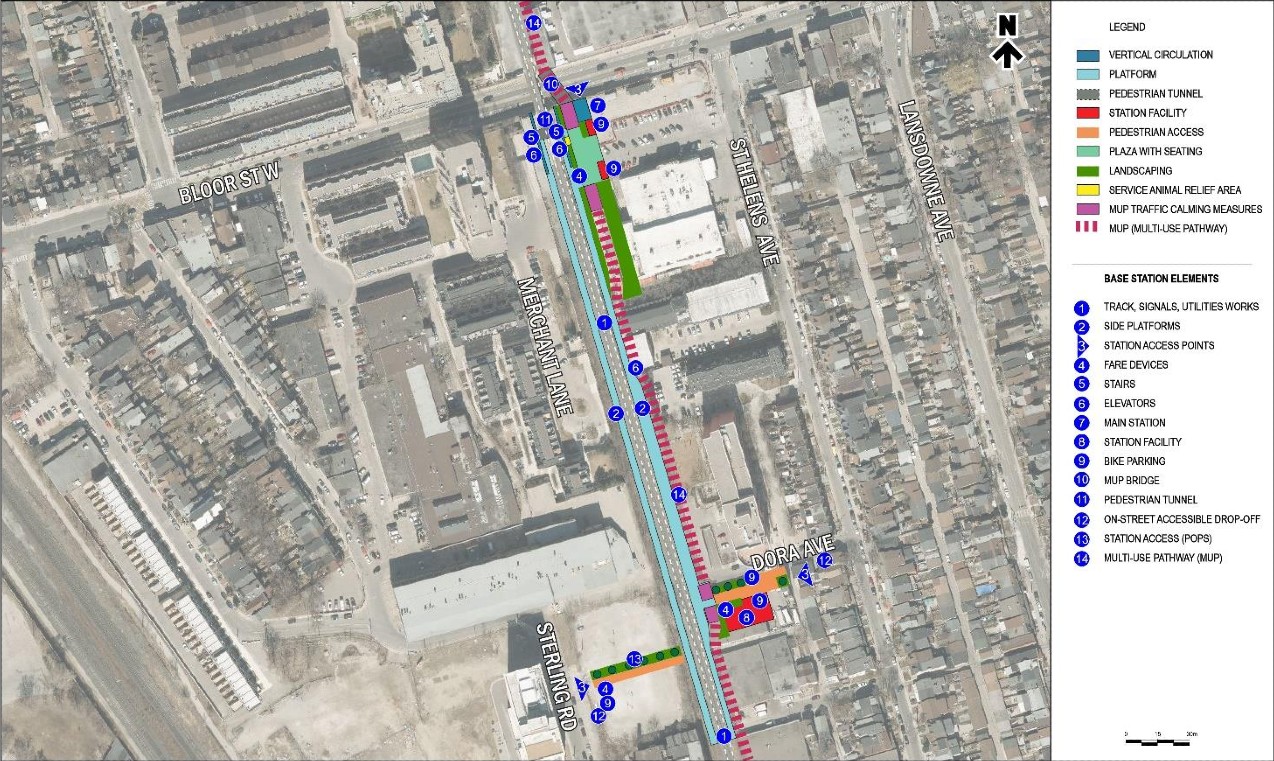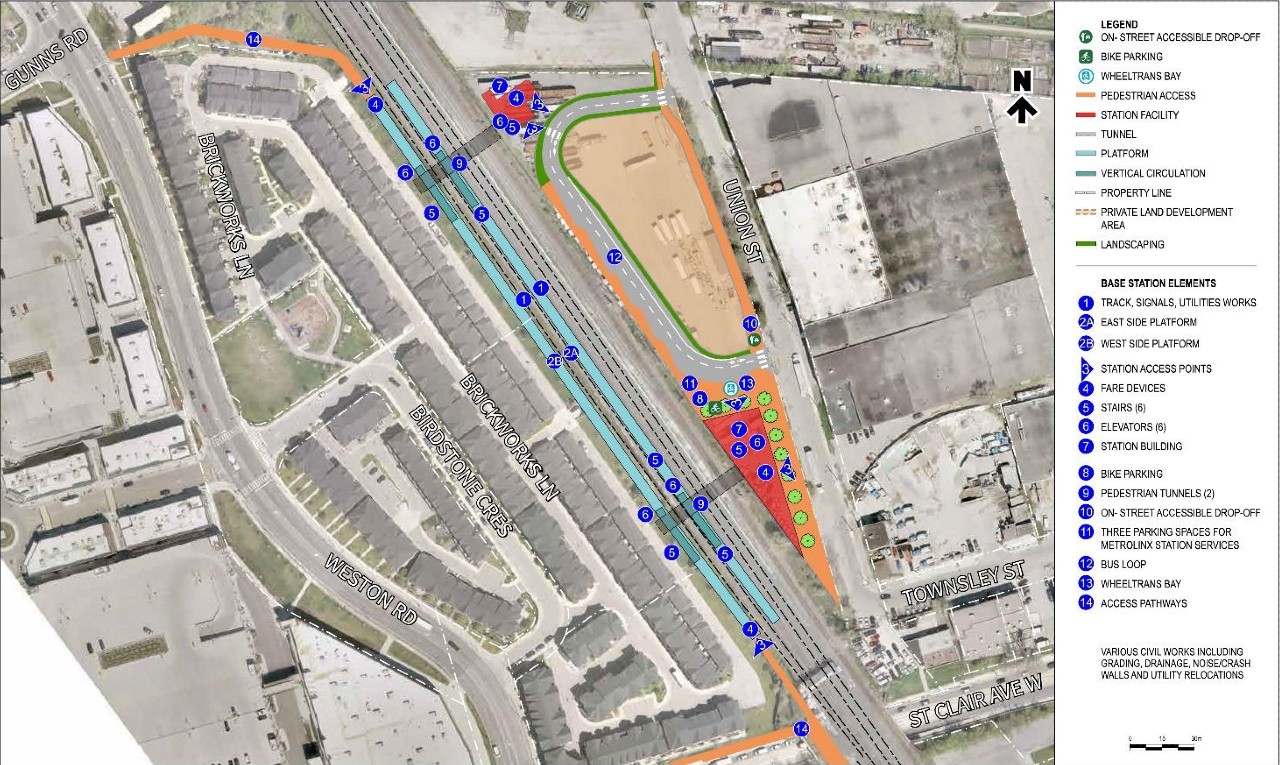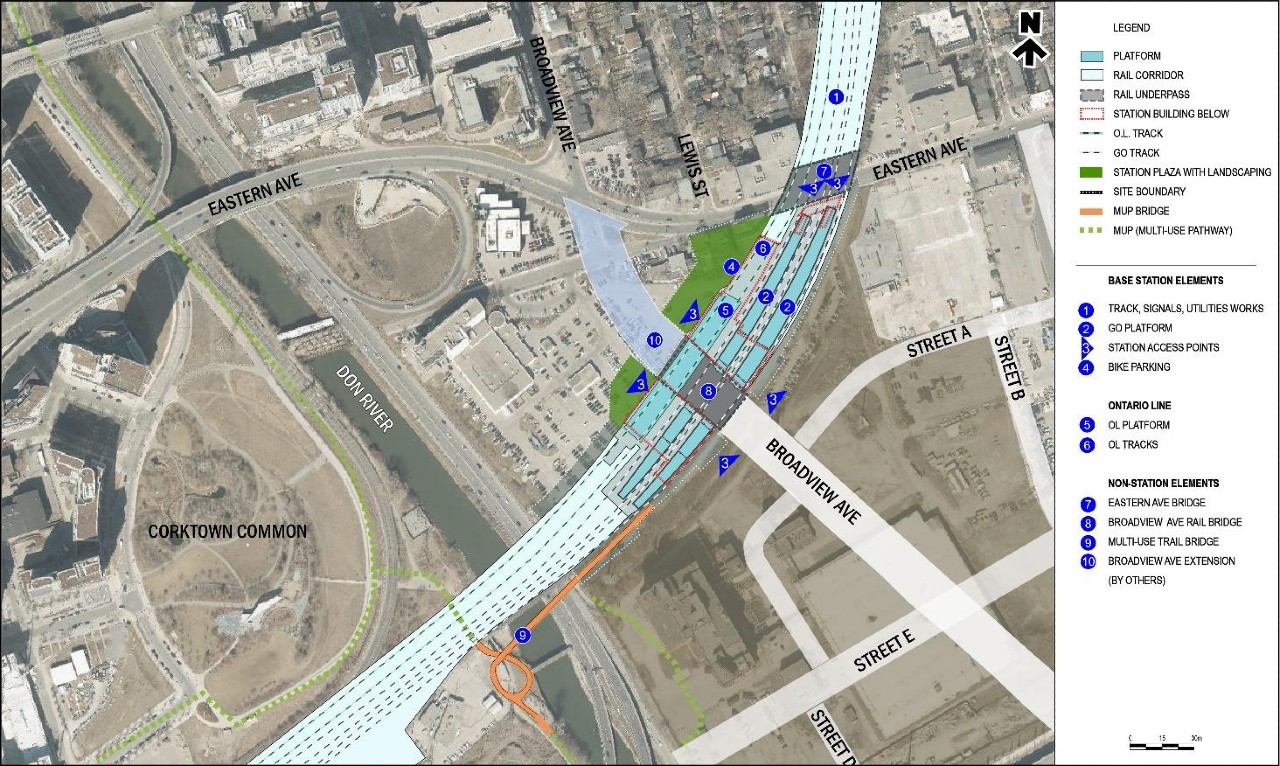In defence of (what remains of) SmartTrack
The original SmartTrack transit plan was a bust. But what remains has value for Torontonians.

Toronto’s SmartTrack transit plan, as originally proposed, was mostly an empty shell.
Touted by former mayor John Tory during his election campaign in 2014, the project called for 17 additional rail stations on the Stouffville and Kitchener GO corridors, as well as a spur along Eglinton Ave. W. from the future Mount Dennis Station on the Eglinton Crosstown line to the airport corporate centre. Proponents insisted that despite the fact that SmartTrack would mostly run along existing lines, it would be a distinct transit service akin to London’s Overground.

However, over the years, a lack of substance behind the ideas was revealed. At the same time, Metrolinx’s GO transit expansion grew more ambitious, eating into any “additional” benefits that SmartTrack might have once promised.
Plans were eventually whittled down, and now just five new stations within Toronto remain on the books. Each is set to begin construction this year or next, with all stations built by 2029.
The final budget for the project is estimated at $1.697 billion, with $585 million coming from the federal government. Also, on June 14 the City announced they have secured “more than $225 million” from the provincial government, leaving the Toronto portion of the tab just shy of $900 million.
This morning, I announced that we have secured an agreement with the province to provide more than $225 million in funding for SmartTrack.
— Jennifer McKelvie (@McKelvieTO) June 14, 2023
If approved by City Council, this will ensure that we can proceed with all five SmartTrack stations.
This agreement is great news for… pic.twitter.com/qhTibnMddP
Of course, some have argued that all program costs not covered by the federal government should be paid for by the province. That would certainly help finances at a time when the City faces a $933-million deficit.
But this attitude is also partly grounded in the idea that GO trains don’t really benefit Toronto residents, which isn’t true today and is absolutely not true of the five much-needed new stations.
No, SmartTrack didn’t require its own branding, and it won’t be a distinct line. But when all is said and done, these stations will have major value for Torontonians, allowing communities that have previously simply been a conduit for a steady flow of trains to actually get on those trains and benefit. And from them, Metrolinx estimates 110,000 new daily riders by 2031.
So let’s dive into each of the five stations, and talk about their status, what they’ll include, and how they will change the city.
Bloor-Lansdowne GO

Construction status:
Work scheduled to begin in 2024
Planned opening:
2027
Potential Impact
Bloor-Lansdowne will be a new stop on the GO Barrie corridor (which you might notice was not part of the original SmartTrack plan) just south of Bloor St. W. and west of Lansdowne Ave., a short walk from both the existing Lansdowne subway station on TTC Line 2 and the current “Bloor” GO station that serves the Kitchener line and UP Express.
Its placement means Barrie line travellers with a final destination on Bloor St. or Danforth Ave. can simply switch to Line 2 at the new station, rather than taking a longer trip involving Line 1 from Union or Downsview Park. This will save riders significant time. It will also allow direct access to and from the community, which includes major employers like Ubisoft Toronto, on the GO Barrie line.
The construction of this station is also important because it formed a key commitment made by Metrolinx to the local community during consultations for the significant Davenport Diamond Guideway project. Fortunately, it’s a sensible project in any case.
Along with planned stations at Eglinton (Caledonia Station on the Eglinton Crosstown project), and Spadina Ave. and Front St., the Bloor-Lansdowne stop will effectively make the Barrie line a north-south express line for western Toronto.
Finch-Kennedy GO

Construction status:
Early site clearing and utility works have begun; major construction expected
to begin in October 2023
Planned opening:
2027
Potential Impact
Finch-Kennedy will be an additional stop on the GO Stouffville line, straddling Finch Ave. E. roughly midway between Kennedy Rd. and Midland Ave., in between the existing Agincourt and Milliken stations.
This project is important because it will help offset some of the pain from the Scarborough RT’s closure this year, as it allows some riders who would have used the RT to instead get on GO trains. At the same time, the new station will further augment transit connectivity in Scarborough, intercepting the Finch East bus — one of the busiest bus routes in North America — as Agincourt and Milliken currently do for the Sheppard and Steeles buses respectively.
That connection to buses will be particularly strong because Finch Ave. will actually be grade separated from the Stouffville rail corridor, eliminating one of the last remaining level crossings of a major transit corridor in Toronto. This will also enable easy transfers between train and bus via the new vehicular underpass being constructed.
What’s more, the new station at Finch-Kennedy will go a long way to connect neighbourhoods that are otherwise quite “remote” as far as Toronto neighbourhoods go, requiring well over an hour on the TTC to reach the city centre (as opposed to >30 minutes on the Stouffville line).
A new station will also open up access to the many excellent Asian restaurants and shopping malls in the area, which are often already city-wide destinations.
St. Clair-Old Weston GO

Construction status:
Work scheduled to begin in 2024
Planned opening:
2029
Potential Impact
St. Clair-Old Weston is a new station planned for the GO Kitchener line where it intersects with St. Clair Ave. W., just east of Keele St. This is a neighbourhood is already seeing significant growth, with the development of the Stockyards mall and several townhome developments, as well as a high-density transit-oriented community (TOC), and so additional transit connectivity is sorely needed.
The station will also really open up access to The Junction, a fast-growing and popular neighbourhood in west Toronto that is currently a bit of a transit desert. Walking to The Junction from St. Clair-Old Weston should take only about 10 minutes, making it a more convenient connection than with the existing Dundas West TTC station.
That being said, connections to the St. Clair streetcar won’t be as seamless as transit connections at the stations discussed above, with riders needing to walk to the next major intersection to the east or west to access that route.
King-Liberty GO

Construction status:
Early site clearing and utility works have begun; major construction scheduled
to begin in 2024
Planned opening:
2028
Potential Impact
Further south on the GO Kitchener line is King-Liberty Station, which will sit between King and Queen streets just west of Dovercourt Rd. The tracks on this section of the Kitchener line (as well as the Barrie and Milton lines, which will not stop at this station) curve northward, and so the station will be one of the rare ones in the region with a significantly curved platform.
From the station, connections will be available to both the King and Queen streetcars by walking south or north respectively, and this means that the Kitchener line will have direct transit connections to a surprising number of major east-west streets in Toronto, including King, Queen, Bloor, St. Clair, Eglinton, Lawrence, and eventually even Finch.
What’s even more exciting is that this new station will provide desperately needed high-capacity rapid transit to the already dense and rapidly densifying King and Queen West neighbourhoods as well as Liberty Village, potentially years before the opening of the Ontario Line.
The station will also come along with a number of key links for pedestrians and cyclists, including a link on the northwest side to the extended West Toronto Railpath, and a pedestrian connection on the south end over King St. and into Liberty Village. This second link will be very useful as it will enable passengers from the Kitchener corridor to walk roughly 500 m south to Exhibition Station, the Ontario Line, and the CNE.
An interesting note is that with the release of the latest updates on the SmartTrack plans, a platform was removed from each of the King-Liberty and St. Clair-Old Weston stations, which means that in all likelihood express trains will not stop at either. This makes sense as the stations on either side of each of the ones mentioned above will see all trains making stops, and express trains need to skip some stations — otherwise, they wouldn’t be express.
The good news here is that by removing one of the platforms at King-Liberty, provision can be made for two tracks for the Milton Line, protecting for the possibility of frequent all-day service to central Mississauga in the future.
East Harbour GO

Construction status:
Work scheduled to begin in 2024
Planned opening:
2027
Potential Impact
East Harbour is perhaps the most significant of all of the SmartTrack stations, and will be located just east of the Don River north of the Unilever/East Harbour development site.
The station will be a stop on both the GO Stouffville and Lakeshore East lines but will also host an additional platform directly adjacent to the GO ones for use by Ontario Line subway trains. This will allow passengers to switch between the three lines by descending to a concourse level and simply walking over a few paces and then ascending to the desired platform.
The site will eventually also become a connection point for streetcar services on the southern extension of Broadview Ave. into the Port Lands, allowing access for residents from the east of the city and the region.
The local impacts of the station on the East Harbour area are something that’s still up in the air. The site developer Cadillac Fairview (owner of the CF Eaton Centre) has plans for a number of major office towers, as well as mixed-use residential towers. However, a stagnant office market could certainly impact plans, leading to delays or changes.
What is clear is that whatever happens at the site will likely be big given the proximity to the downtown core and the Port Lands, as well as the incredible transit connectivity.
Code and markup by Chris Dinn. ©Torontoverse, 2023